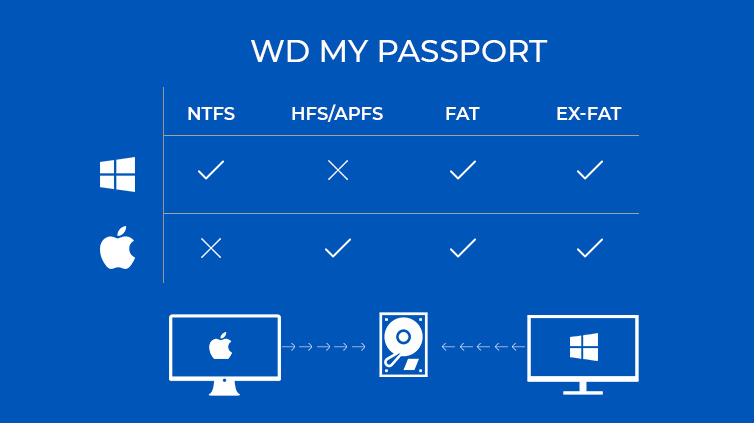
- FORMAT EXTERNAL HARD DRIVE FOR MAC AND PC HOW TO
- FORMAT EXTERNAL HARD DRIVE FOR MAC AND PC MAC OS
- FORMAT EXTERNAL HARD DRIVE FOR MAC AND PC PC
- FORMAT EXTERNAL HARD DRIVE FOR MAC AND PC FREE
FORMAT EXTERNAL HARD DRIVE FOR MAC AND PC PC
If your Mac or PC has a Windows OS installed, then you won't face any trouble managing it.
FORMAT EXTERNAL HARD DRIVE FOR MAC AND PC HOW TO
How to Format Hard Drive for Mac and PC on Windows? Go to the "General" tab to know details about the file system of the disk. To check it, just select the partition or the external disk, right-click, and visit its "Properties". There are different other kinds of file systems that your hard drive can support. It provides high-end encryption and is a replacement for the age-old HFS+ system developed by Apple.

It is the common format for the native hard drive of the system and is equipped with tons of new-age memory allocation techniques.
FORMAT EXTERNAL HARD DRIVE FOR MAC AND PC FREE

Why should you consider formatting your hard drive? How to Recover Formatted Hard Drive on Mac? How to Format Hard Drive for Mac and PC on Mac? There is no filesystem that will be ideal for all operating systems, as they were all built differently. You have to ask yourself, do I need to use those characters, or do I need individual file sizes to be higher than 4GB each. The following reserved characters are forbidden on NTFS files/names: (greater than) Only problem with NTFS is that it does not allow the following characters, which can be a problem on Linux and OSX, but obviously not on Windows: It also has very limited permission and ACL support for those who need to isolate different users from certain files. ExFAT has no file system-level encryption or compression support, and, like FAT32 before it, there is no journaling built into the exFAT file system. The problem with ExFat (even though others suggested it, is the 4GB file size limit.
FORMAT EXTERNAL HARD DRIVE FOR MAC AND PC MAC OS
NTFS is the most reliable of the three file systems because it is journaled. However, Mac OS has poor NTFS write support. You'd probably have to purchase the Paragon NTFS driver. See How-To Geek: How to Write to NTFS Drives on a Mac. If you add phones to the mix, you'll have to use FAT32 or exFAT. As long as you don't hit the file size limit of FAT32, they're pretty much the same. However, I would not use a drive formatted with FAT32 or exFAT for anything that isn't transient or unimportant. I recently had problems with both file systems on camera SD cards that required reformatting to fix. I don't even want to think about having the same issues with a 2TB hard drive. While you can fix minor problems on all three file systems with fsck, you will have to use MS Windows to fix anything major. Consider splitting the drive into two partitions. A large NTFS partition for data that is more stable, as well as read/write on Windows and Linux. A small exFAT partition to copy files from Mac OS.įAT32. Read/write on all three systems. Not journaled. File size < 4G.ĮxFAT. Read/write on all three systems. Not journaled.


 0 kommentar(er)
0 kommentar(er)
